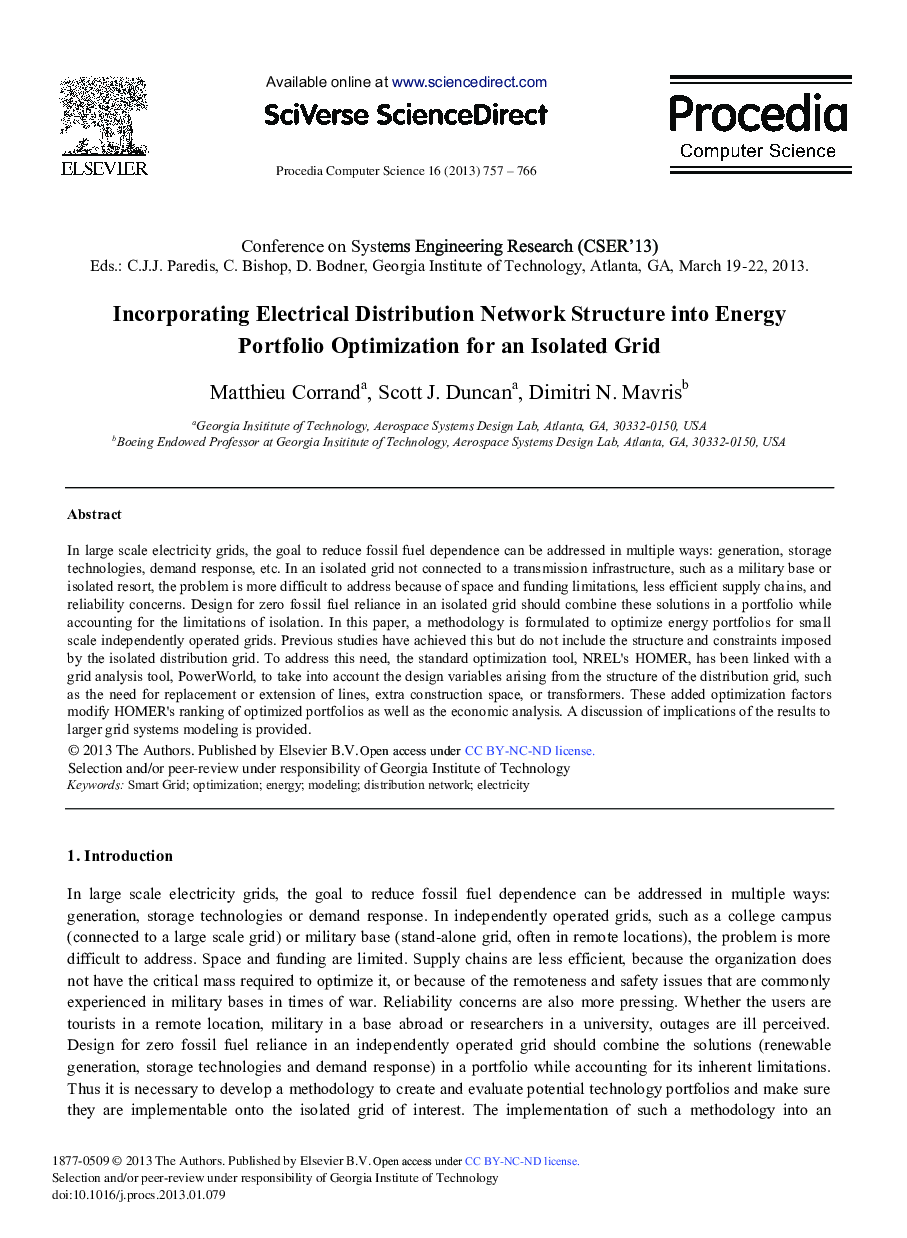| Article ID | Journal | Published Year | Pages | File Type |
|---|---|---|---|---|
| 486625 | Procedia Computer Science | 2013 | 10 Pages |
In large scale electricity grids, the goal to reduce fossil fuel dependence can be addressed in multiple ways: generation, storage technologies, demand response, etc. In an isolated grid not connected to a transmission infrastructure, such as a military base or isolated resort, the problem is more difficult to address because of space and funding limitations, less efficient supply chains, and reliability concerns. Design for zero fossil fuel reliance in an isolated grid should combine these solutions in a portfolio while accounting for the limitations of isolation. In this paper, a methodology is formulated to optimize energy portfolios for small scale independently operated grids. Previous studies have achieved this but do not include the structure and constraints imposed by the isolated distribution grid. To address this need, the standard optimization tool, NREL's HOMER, has been linked with a grid analysis tool, PowerWorld, to take into account the design variables arising from the structure of the distribution grid, such as the need for replacement or extension of lines, extra construction space, or transformers. These added optimization factors modify HOMER's ranking of optimized portfolios as well as the economic analysis. A discussion of implications of the results to larger grid systems modeling is provided.
